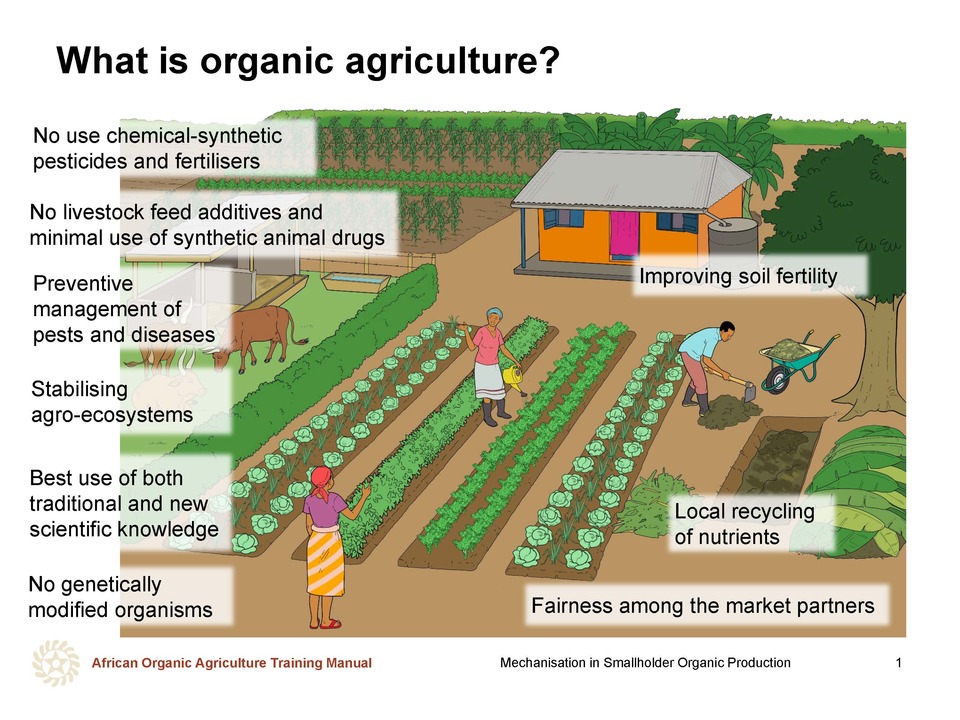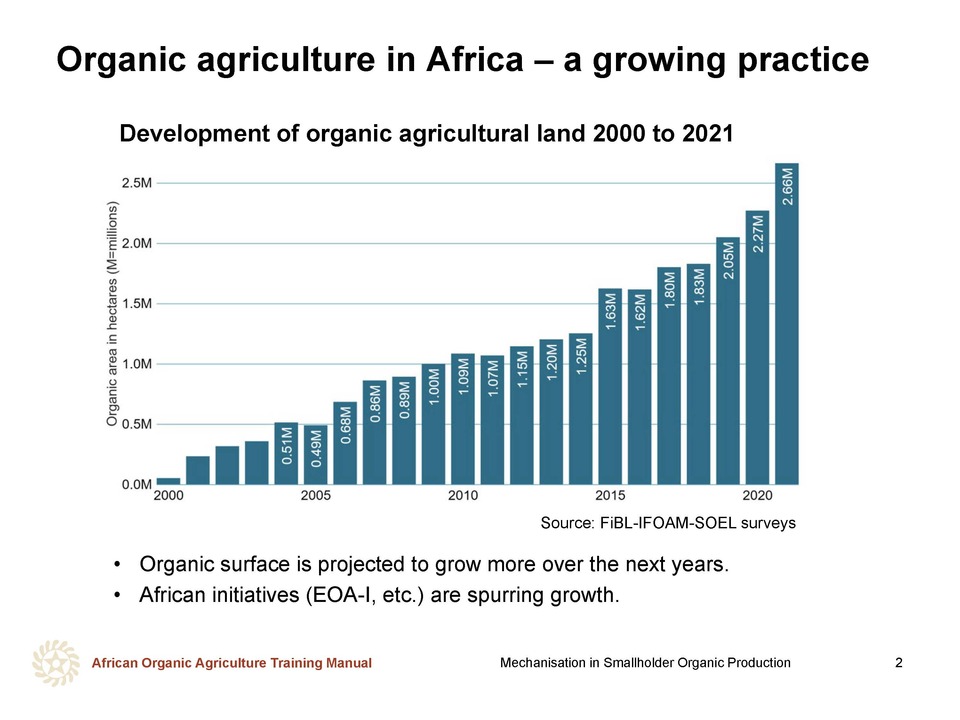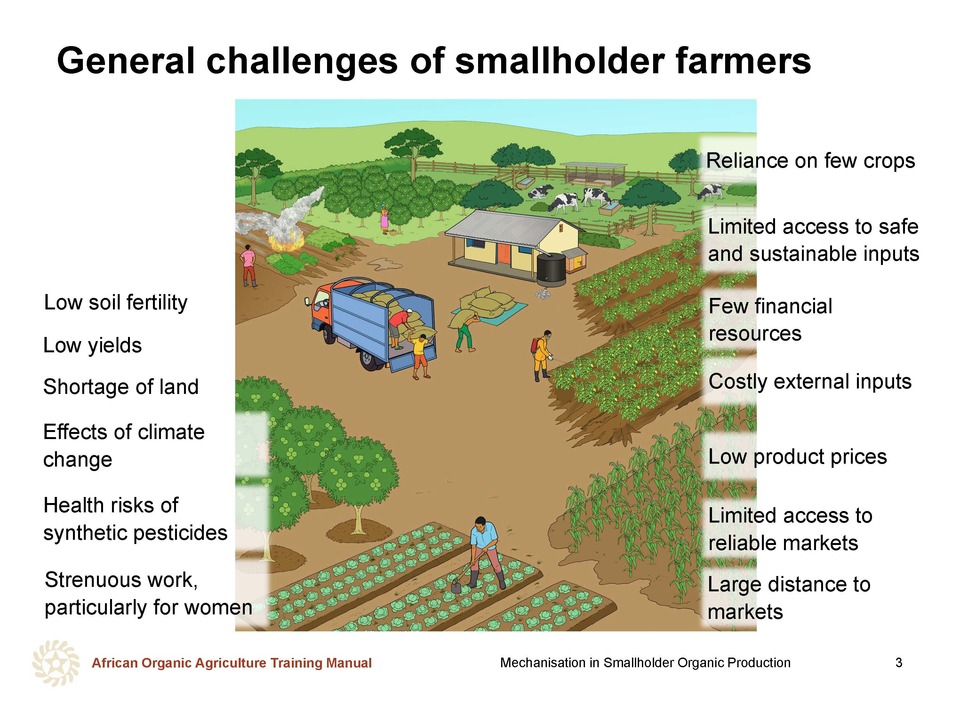Introduction
Smallholder farming in Africa
Most of the food produced in Africa, particularly in sub-Saharan Africa, is from smallholder family farms. African smallholder farmers face many challenges which constrain their yields and productivity resulting in low incomes and food insecurity. One of the main bottlenecks in smallholder farming is that 60 to 80 percent of African land cultivation is still performed with hand-held tools, relying almost entirely on human muscle power. This results in a high level of drudgery, particularly for women who perform most of the farming work. It is also a disincentive to farm and an incentive for men and youth to migrate from rural areas to cities for other employment opportunities. The reliance on human power with the use of hand tools contributes to reduced farm output and food and nutrition insecurity.
Discussion on labour related bottlenecks
- Discuss with the farmers/participants what the main labour related bottlenecks are that they face in farming.
- Discuss each challenge for the main production systems prevailing in the area.
- Find out from the participants how they have tried to resolve such bottlenecks and which levels of success they have achieved.
What is organic agriculture?
Organic agriculture is a set of practices that seek to sustain agricultural yields while conserving nature and protecting the health of the farmers and consumers. It is a way of producing good quality farm products in harmony with nature. Organic farmers use a combination of traditional and scientific knowledge to reduce soil erosion, ensure nutrient recycling through addition of organic matter, diversify production to manage pests and diseases, and only use naturally derived inputs when required. Organic farmers optimise the growing conditions of crops by enhancing the natural fertility of the soil to ensure good nutrient and water supply, creating diverse cropping systems and promoting natural enemies of pests, recycling organic materials and manures and using natural inputs while renouncing chemical pesticides and fertilisers. Along with sustainable yields and health benefits, fewer negative environmental impacts, more biodiversity, and an environment free of potentially dangerous chemicals are among other benefits of organic farming. More details on the principles and practices of organic agriculture can be found on the IFOAM Organics International website at ifoam.bio.
Despite the many benefits of organic farming, there are several drawbacks which often limit or constrain smallholder farmers from practicing organic farming optimally. Some of these bottlenecks include:
Weed management challenges: Under conventional farming, some farmers can use technologies such as herbicides to keep the weeds on their farms under control. These chemicals are not permitted under organic management. Alongside the weed intensity challenges are labour bottlenecks to achieve timely and effective weed control. Farmers can suffer yield losses due to high weed competition. Besides, plantation crops such as coffee, cacao, bananas, citrus and others are often planted in large monocrops and can demand much labour for weeding and other operations.
High pest and disease infestations: High pest and disease pressure calls for appropriate techniques to manage these pests and diseases to prevent economic yield losses in a situation where synthetic chemicals are prohibited.
Sharing of knowledge on organic farming practices and experiences
Invite the participants to share their knowledge on organic farming by asking the following questions:
- What is your understanding of organic farming – have they ever heard about it?
- Are there any farmers who are practicing organic farming in the area?
- If so, discuss the main crops grown under organic management and the key practices which the organic farmers carry out compared to conventional. In the process, take note of any farm implements or tools mentioned by the participants in relation to organic production. Also take note of the key challenges mentioned or implied by the farmers in relation to organic practice which might have a bearing on mechanisation.
Organic agriculture in the context of Africa
Often referred to as ecological organic agriculture (EOA) on the African continent (in reference to the large numbers of farmers who practice agroecology), organic practices are one of the many methods being considered to improve food and nutrition security as well as incomes for smallholder farming households on the continent. Many African countries are taking steps to include organic agriculture in the conversations and debates about food, nutrition and farming at the governmental level. In 2011, a high-level decision was taken through the African Union (AU) Heads of State and Government to recognise EOA as important in sustainable farming and poverty reduction. An EOA Initiative (EOA-I) was launched to mainstream EOA practices in national policies, plans and strategies by 2025. Though still a relatively small movement on the continent as a whole, organic agriculture in many African countries is a growing practice projected to grow and expand over the coming years.
Some research has shown that, in Africa, with healthy soils, locally-adapted best practices, and appropriate use of technology, smallholder organic farmers can be as successful as conventional farmers in terms of yields, and will be able to maintain those yields in the long term.
Discussion on the development of organic farming in the area
Discuss with the participants how organic farming has developed in the area in the past years by asking the following questions:
- Have you observed an increasing interest in organic farming practices?
- Is there an increasing demand from consumers for pesticide-free organic products?
- Do you know of any organic programmes being promoted in the area?
- Who are the main agents promoting these initiatives?
- Is there any component of mechanisation involved?



 tap and then scroll down to the Add to Home Screen command.
tap and then scroll down to the Add to Home Screen command.